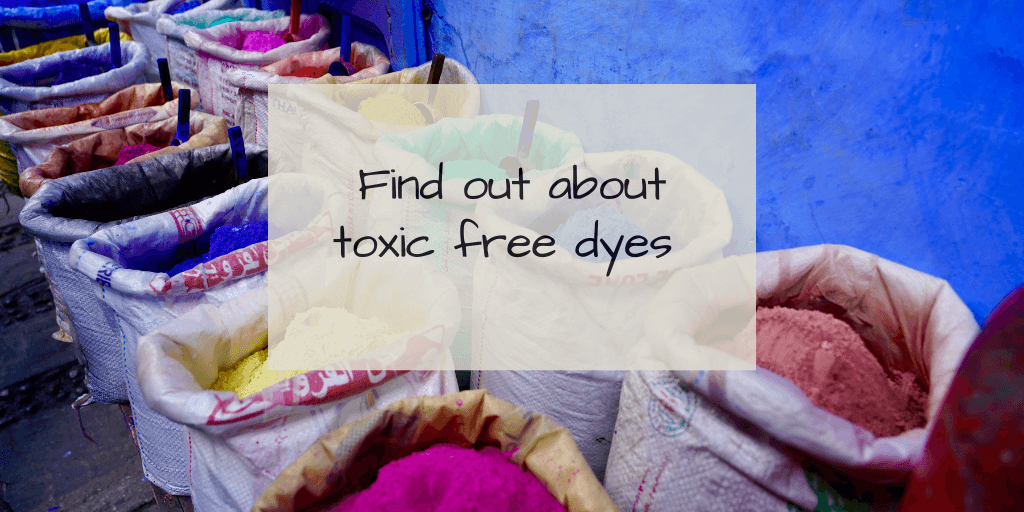
Toxic Dyes
Did you know that toxic chemicals are added to garments during their manufacture? Workers are exposed to and breathe in fumes, toxic dyes and chemicals used for finishing products. Some of the chemicals used in garment production especially synthetic garments include:
- chlorine bleach - can cause respiratory problems including asthma
- formaldehyde - carcinogenic
- ammonia - absorbed into lungs and cause burning sensation to nose, eyes and throat.
- flame retardants - used to stop clothes from burning and used in children's pyjamas - carcinogenic
Dyeing of garments in a conventional way
Dyeing of synthetic garments in the conventional way includes the use of heavy metals which are highly toxic. These toxins can cause damage to our internal organs and they also have a huge impact on our environment. Can you even image what the garment workers are exposed to?
Natural Dyes
It's taken a long period of time for us to research the safest way to dye our garments. When we made the choice to limit our impact on people and planet we researched the use of natural dyes. We absolutely loved the 'one off' affect seeing each garment's slightly different results.
Some of our findings:
- a very time consuming process
- expensive and virtually impossible to try and replicate a colour.
- difficult to match batch lots. If a collection proves popular and a re-order is required it proves difficult to match the original colour
- a lot of water is required to dye garments
- natural dyes tend to fade more than other dyes.
- Large quantities of plants/roots are required to dye a small amount of product.
Natural dyes tend to fade more than other dyes. It's also hard to meet customer's expectations which can be a little bit tricky. Extra tags outlining the nature of the garment is essential however the less tags, packaging etc we use is important in minimising our carbon footprint. We're sure that more research will be done in this industry but at this stage we've decided not to go down the natural dying path.
Fibre-Reactive Dyes
Fibre-reactive dyes meet the requirements of the Oeko-Tex Standard 100, an international textile certificate program. These dyes are classified as low impact both on people and planet and don't contain any toxins and require relatively low rinsing rate. As we have chosen to use natural fibres and cellulosic fibres in our collections these fibre-reactive dyes are suitable for these types of fibres and we have had excellent results using these toxic free dyes.
Buying Eco Friendly Clothing
It's important to note that the majority of fast fashion companies use toxic dyes that compromise people and planet. We're trying to spread the word to encourage people to buy eco friendly clothing free from nasty toxins. Before you make a purchase from us or any other clothing label, take a minute to research what sustainable practices these labels have in place. Also consider how many times you think you will wear a piece of clothing and if it's less than 30 wears then maybe you should reconsider your purchase.
Find out more about our eco-minded community and get $20 off your first order.

